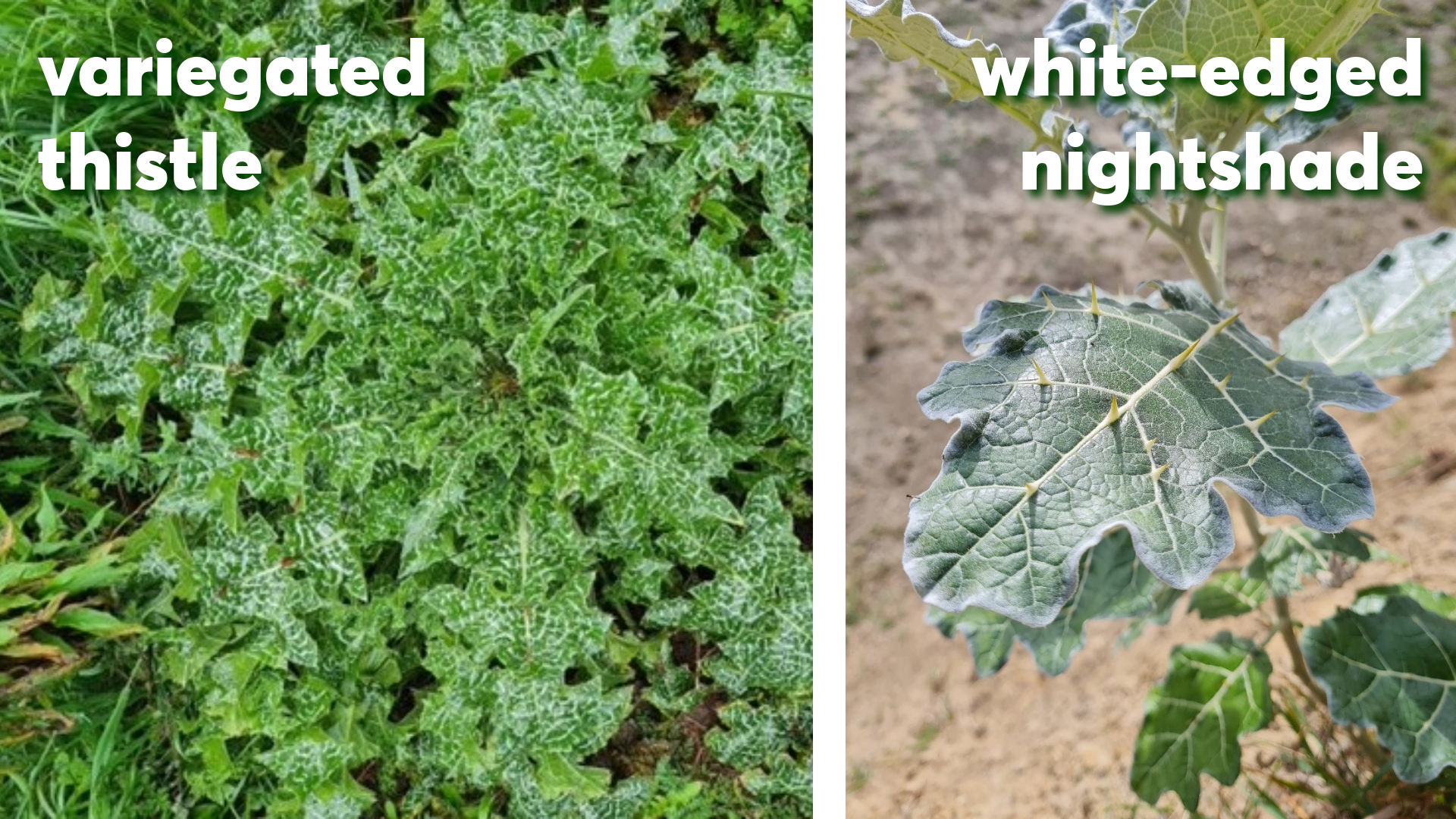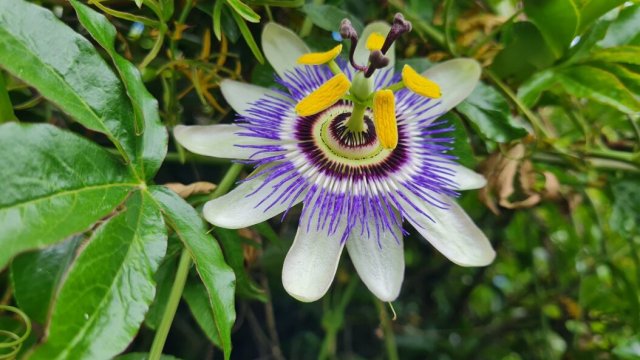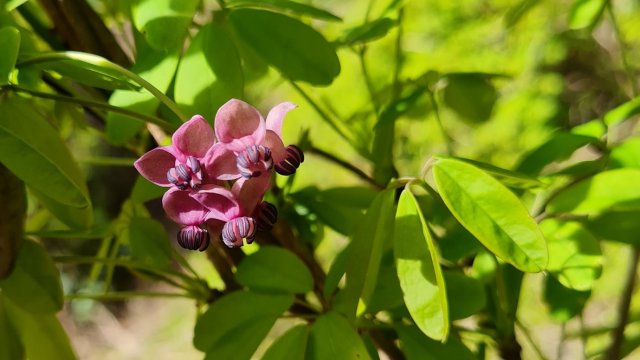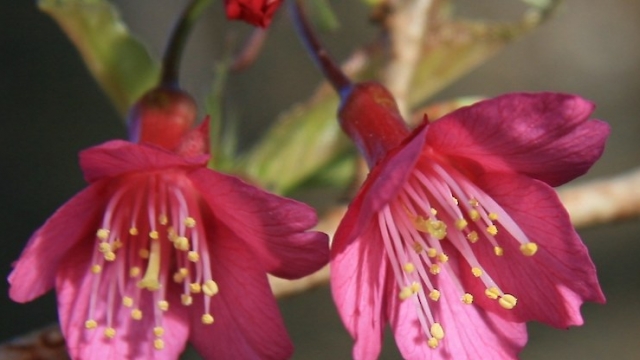This month we’re on the lookout for two of our spikiest pests: variegated thistle and white-edged nightshade
13/10/2023 12:34pm
These prickly customers are most often found in areas of pasture but may also be present in disturbed forestry or new subdivisions that have been converted from pasture. They rapidly form dense stands that outcompete grasses and prevent people and livestock from accessing the land.
Variegated thistle (Silybum marianum) is a very large, spiny thistle. It forms dense clumps rapidly, and individual plants are often in excess of one metre in width with flower stems reaching up to 2.5 metres high.
At this time of year, keep an eye out for large rosettes of leaves with striking white veins and blotches. Large, single purple flowers are visible from November through to January, producing many dark, heavy seeds. The spines around the flower-head form a distinctive star pattern.
The only similar species that it could be easily confused for is winged thistle (Carduus tenuiflorus). It is common in Nelson, but is much smaller and has cream-coloured patterning on the leaves.
White-edged nightshade (Solanum marginatum) is unlikely to be mistaken for any other plant in New Zealand. Native to North Africa, it was originally introduced as an ornamental plant during the 1880s.
A conspicuous, thorny, multi-branched perennial shrub or small tree, white-edged nightshade can grow up to 5 metres tall and form impenetrable thickets. The leaves are green with white edges and prominent white veins, its lower surface chalky-white and velvet-like. There are sharp woody spines along the top and bottom of leaf veins, on the branches and the stem of the plant.
In the Nelson Tasman region there are known sites in Dodson Valley and Brook Valley, on the Richmond foothills and in the Wairoa Gorge.
The large green/yellow fruit resembles an unripe tomato up to 5 cm in diameter. The fruit is poisonous to humans and livestock and when plants are disturbed, fine hairs are released as a dust that can cause extreme respiratory tract irritation.
The seed of both species is spread mostly by soil movement and machinery, though animals, birds and wind. The seeds can remain viable for up to 10 years for variegated thistle and 30+ years for white-edged nightshade, making eradication a long-term task requiring both patience and persistence.
Thanks to the efforts of rural landowners in Nelson and Tasman over the last 30 years, we only have a few small pockets of these pests remaining.
Both species are listed as Progressive Containment pests and landowners with either of these species on their land are reminded that there is a requirement to destroy all adult and juvenile plants before flowering each season, and that these properties will be inspected annually.
Small plants can be readily pulled or grubbed out as long as most of the taproot is removed. Large plants can be cut and stump treated or sprayed with a suitable herbicide.
If you see these pests or require further advice or information on other biosecurity threats, please contact Council’s biosecurity officer by emailing biosecurity@ncc.govt.nz or call 03 546 0200.




